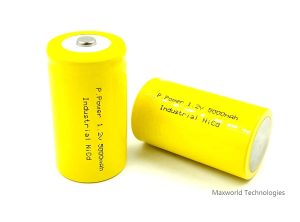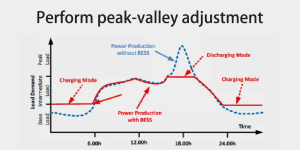Which is Better for LiFePO4 Batteries: Series or Parallel?
You may have a boat, an RV, a solar installation, or another device. Additionally, a single battery cannot provide the necessary voltage or amperage.
According to your situation, the batteries could be connected in series or parallel as a solution. However, when deciding whether to connect batteries in series or parallel, which is advised?
The overall amount of energy, expressed in watt-hours, is increased by both techniques. However, they approach it differently, and the outcomes vary. As you continue reading, you will discover how to connect batteries in series and parallel so you can decide which is best for you.

How are batteries connected in series?
Batteries in series
Battery connections in series result in higher voltage. The amount of amperage it can handle is unchanged. The combined voltage of two 12V 100Ah batteries, for instance, will be 24V if they are connected in series. The 100 Ampere Hours (Ah) of capacity are constant.
Please kindly note that the batteries should have the same voltage and rated capacity before being connected in series. For your closet, mixing and matching are acceptable, but not when designing battery arrangements! This is potentially harmful and could harm your battery.
Here's a step-by-step guide for connecting batteries in series:
The negative of one battery should be coupled with the positive of the following battery.
When all the batteries are connected in a single line, keep securing the batteries in this manner (your “series”.)
It is now necessary to attach the positive terminal of the device’s first battery in the series to that terminal.
To the negative connection on the application, attach the negative connector of the final battery in the series.
Surprisingly, multiple batteries can also be charged at once. Make sure the charger you pick can manage the total voltage generated by all of your batteries.
It is also very important. The majority of lithium-ion batteries can be connected in series, albeit not all of them can. The user manual for the battery has more information.

How are batteries connected in parallel?
Batteries in parallel
What is the fundamental distinction between wiring batteries in series and parallel, then? With a series connection, the voltage will increase, while a parallel connection will increase battery capacity. The overall voltage remains unchanged.
In other words, pairing together two 12V 100Ah batteries will give you a 100 amp-hour overall capacity. 12 volts is maintained as the voltage.
Mixing and matching are prohibited, just like when batteries are used in series. The voltage and capacity of each battery in a parallel connection must match.
How to connect batteries in parallel is as follows:
Each battery’s negative terminal should be connected to the negative of the battery next to it.
Repetition is necessary for the positive terminal.
The positive connection of the last battery should be connected to the device’s positive terminal. For the negative terminal, repeat the process.
Note: By utilizing lower voltage, higher capacity batteries, you can reduce the number of parallel connections.

Which is better for me, series or parallel charging of batteries?
As you continue reading, you will discover how to connect batteries in series and parallel so you can decide which is best for you. The approach you choose ultimately depends on the requirements of the application you’re trying to support.
Advantages and disadvantages of batteries in series
Batteries connected in series are frequently a preferable option for bigger applications requiring high voltage. (Ex: more than 3000 watts). Thinner wiring can be used since higher voltage results in lower system current. Additionally, the voltage drop will be less.
Cells connected in parallel and series have one significant drawback. All of your apps must operate at greater voltages when you do this. For instance, 24V is produced when two 12V batteries are connected in series. No 12V devices can be powered without the use of a converter.
Advantages and disadvantages of batteries in parallel
Which benefits do parallel battery connections have over series battery connections? You increase the capacity while maintaining the same voltage, which allows you to run the application longer. The other benefit is that if one battery has a problem, the others won’t be affected. Your gadget will still be powered by a functioning battery.
The batteries will charge more slowly if they are connected in parallel, which is a drawback. Less voltage also results in increased voltage drop and higher current consumption. You’ll require thicker wires and it can be challenging to power large applications.
Are the batteries connected in series or parallel or series and parallel?
No connecting method is ultimately “better” than the others. The optimum battery for your boat, solar system, RV, or other power demands ultimately determines whether to use a series or parallel battery.
However, there is a choice, and that is series and parallel. On the basis of this, it is not essential to connect your batteries in series and parallel. In that case, your system would get shorter!
A series-parallel connection is created by connecting many cells together in series. Then you parallel connect one more pair of batteries. You can raise voltage and capacity using this technique.











